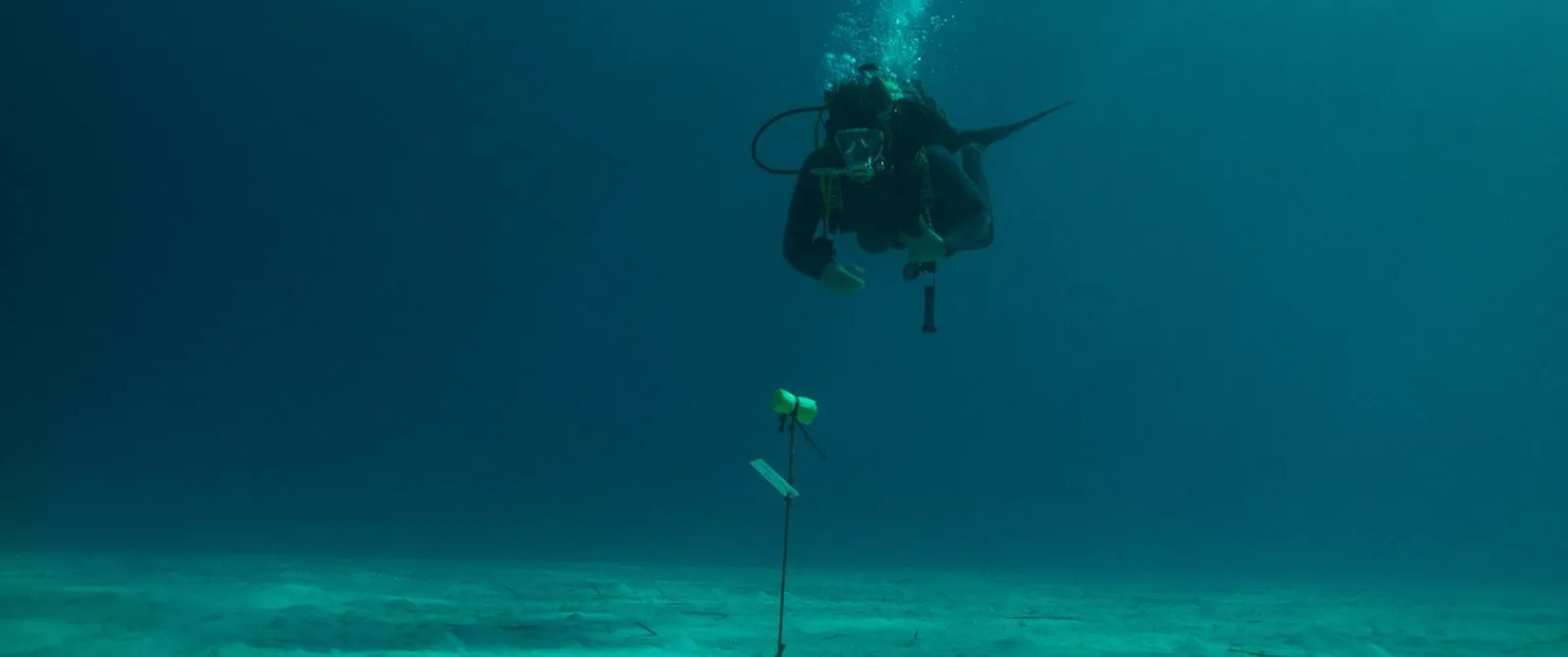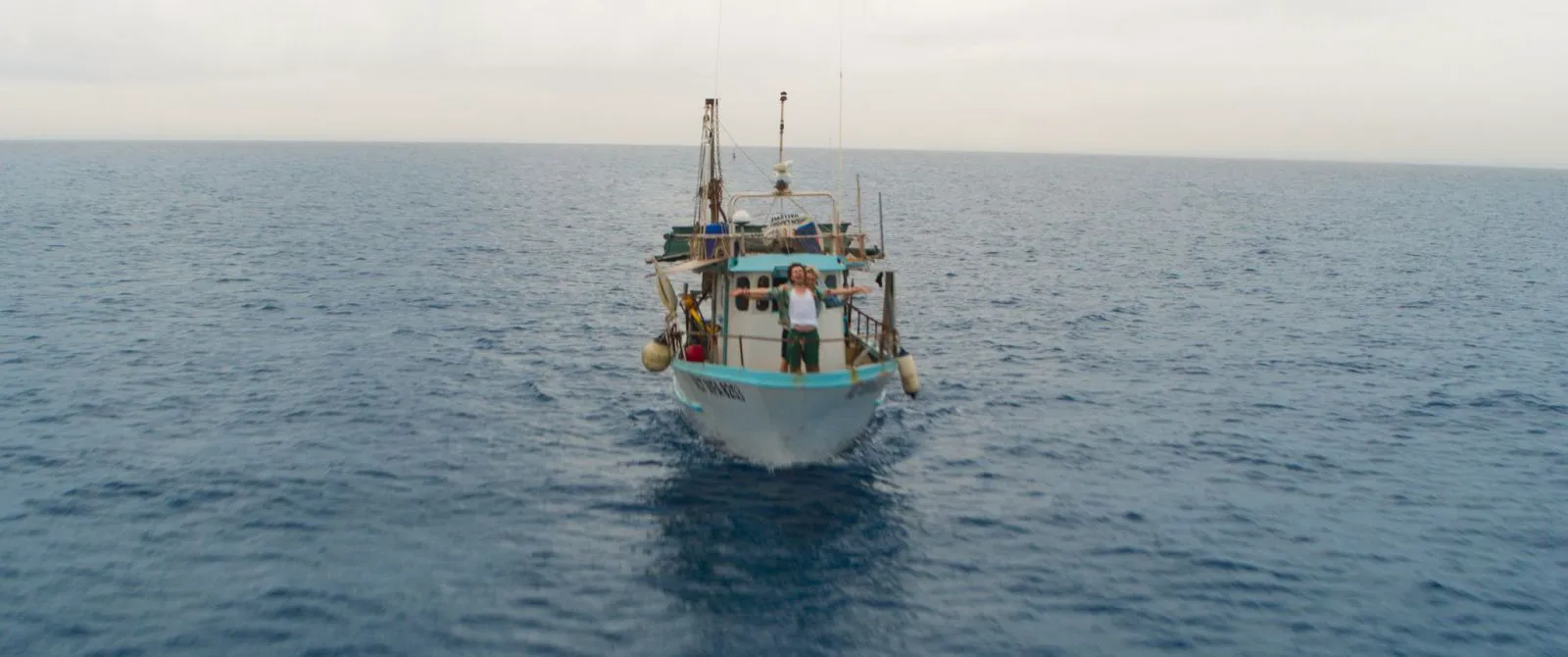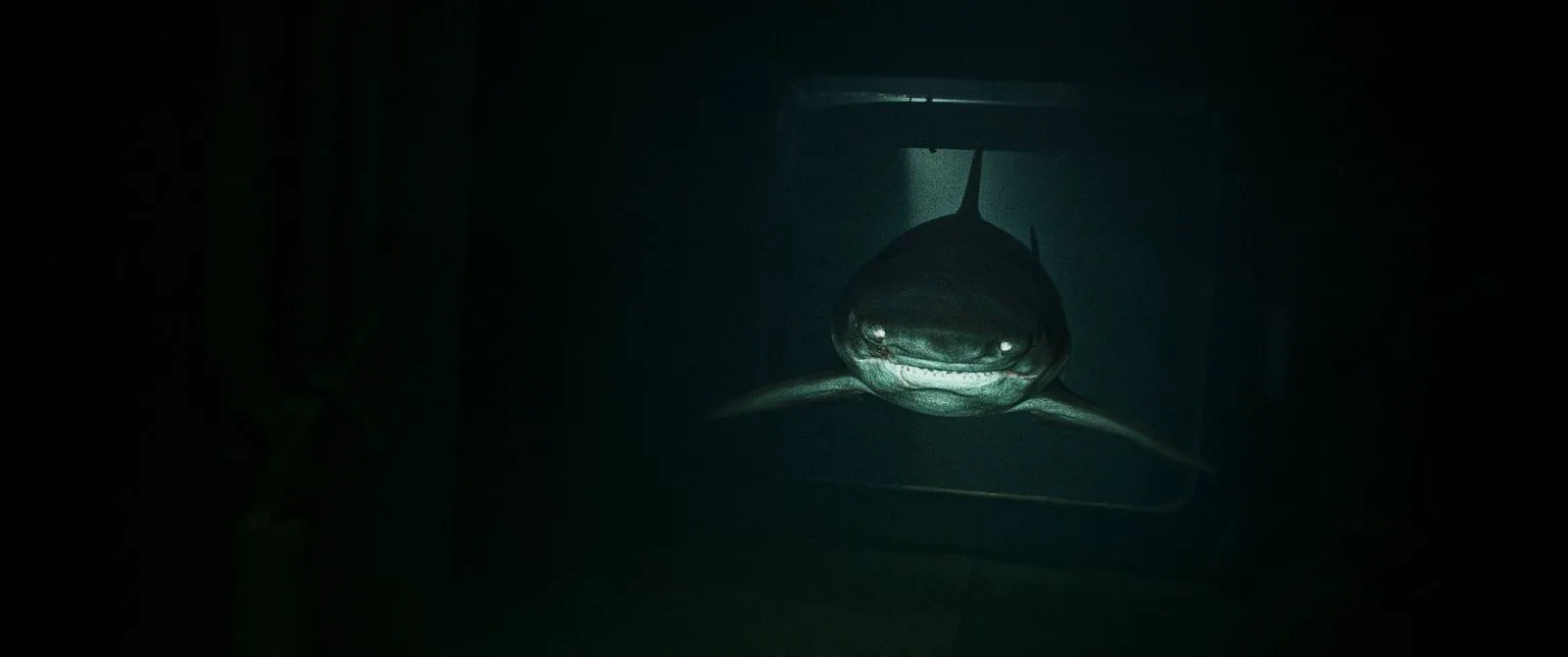Five Friends, a Shipwreck, and a Whole Lot of Sharks: A Review of “Dangerous Waters”
Five university friends decide to explore the “Charlotte,” a ship that sank near the Virgin Islands during World War II. Little do they know, a pack of hungry sharks lurks nearby, and they’re about to face them in a deadly battle.

Still from “Dangerous Waters”
Shark thrillers hit theaters every year, but almost none come close to the artistic merit of Steven Spielberg’s “Jaws” or Renny Harlin’s “Deep Blue Sea.” Swedish director Joachim Hedén’s “Dangerous Waters” offered hope for, if not a suspense masterpiece, then at least an engaging spectacle. After all, the filmmakers were specialists in “marine” themes. In 2020, the director himself released the tense thriller “Breaking Surface” about divers surviving on the ocean floor, and screenwriter Nick Saltrese was involved in James Nunn’s thriller “Shark Bait.” “Dangerous Waters” producer Andrew Prendergast made his directorial debut back in 2004 with the horror film “Parasite,” which tells the story of a sea predator attacking an oil platform.
However, hopes for a good marine horror film were not fulfilled. The first thing viewers of “Dangerous Waters” will notice is the film’s vague composition. After a prologue with the torpedoing of the “Charlotte,” the film unexpectedly veers toward a scenic film about two sailors, Noah (Jack Parr) and Levi (Julian Sands), searching for the wreckage of a warship, hoping to profit from the find. When Noah’s former friends come to visit, the film changes genre again, becoming a strange mix of drama and youth comedy.

Still from “Dangerous Waters”
A Muddled Mix of Genres
While the narrative about the search for the “Charlotte” is somewhat interesting (mainly due to the good underwater shots), watching the relationships of university friends who have long been separated by life quickly becomes boring. Joachim Hedén, who started with independent dramas, failed to adequately present the film’s main dramatic conflict: the confrontation between Noah and the wealthy financier Brett, who are in love with the same girl, Sam (Kim Spearman). The director’s attempts to add a pinch of humor (Levi can’t remember Brett’s name) are puzzling. The joke repeated many times (calling Brett Ben and his dissatisfied reaction to it) makes you doubt the thoughtfulness of the concept. And this is not the only plot tautology.

Still from “Dangerous Waters”
Predictable Shark Encounters and Convenient Plot Devices
After the opening scene, Joachim Hedén forgets about the sharks for a long time. But even in the second half of the film, when the characters finally meet the sea predators, the director allows himself to repeat himself. He builds the interaction with the fish according to the same scheme, and the doors in the cabins close surprisingly easily, as if the ship had just left the shipyard, and had not been lying on the ocean floor for 80 years, overgrown with algae and rust. But the most dubious plot move is the presence of an air pocket where the characters can calmly breathe and discuss ideas for saving their lives. The director needed this deus ex machina in order not to waste his imagination on solving the problem of running out of oxygen and to focus on the sharks.
As expected in low-budget cinema, the authors care little about the realism of what is happening, and most of the characters play the roles of plot functions. Creating artificial obstacles for the heroes, building scenes with sharks according to a single template, director Joachim Hedén and screenwriter Nick Saltrese demonstrated a poor understanding of how to combine two horror plots in one film: treacherous sea predators and survival in conditions of lack of oxygen on the ocean floor.
A Standout Performance Amidst the Chaos
Among the few advantages of the film is the participation of the seasoned British actor Julian Sands, who turned even the poorly written role of the sea wolf Levi into an acting benefit. Resisting the illogical script, Sands managed to show his hero on the one hand as a calculating businessman, calculating the possible profit from the discovery of the “Charlotte,” and on the other as a romantically in love with the sea man. Unfortunately, this film was one of the last in the actor’s career.
Final Verdict: Lost at Sea
“Dangerous Waters” turned out to be about the same level as Claudio Fäh’s “Open Water 3: Cage Dive,” which is very similar in plot. A good idea was leveled by a bad script and unsuccessful staging, so even the standard timing of about 90 minutes is as difficult to overcome as getting to the surface from the shark-infested ruins of a warship.